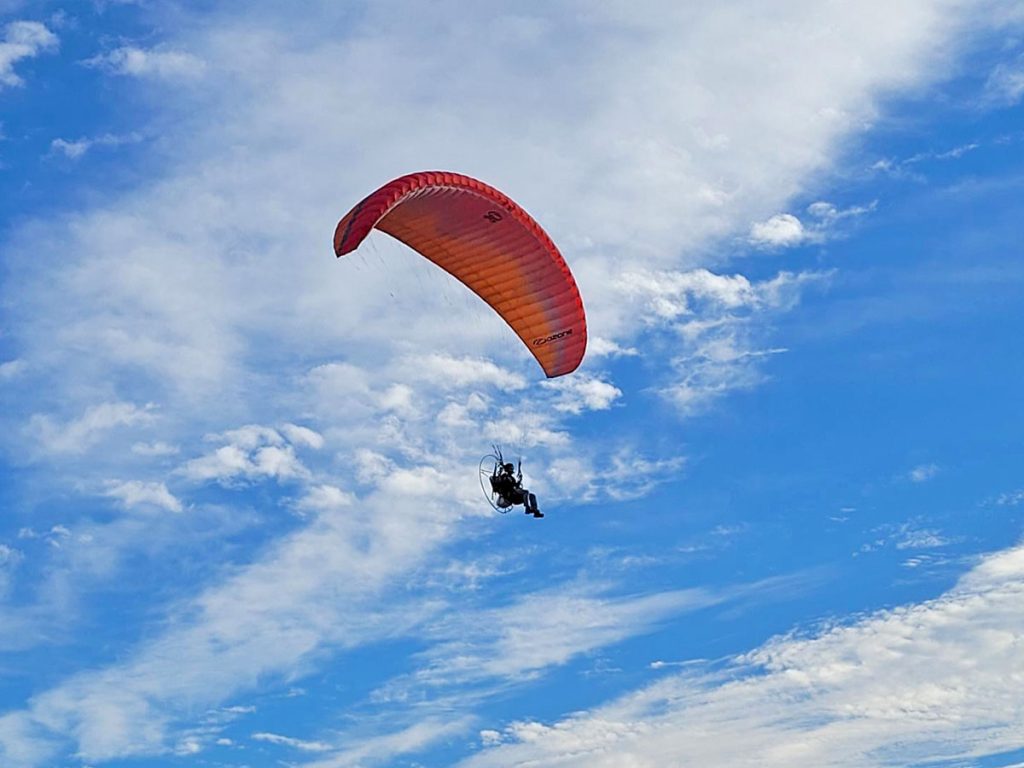Earthly Dynamics presents latest research at the 26th AIAA Aerodynamic Decelerator Systems Technology Conference and Seminar. The AIAA Aerodynamic Decelerator Systems Technology Conference and Seminar (ADSTCS) provides the world’s leading scientists, engineers, researchers, managers, and promising students within the field of parachute and aerodynamic decelerator systems an opportunity to present recent advances before a knowledgeable international audience. Topics include design and development, materials and manufacturing, modeling and simulation, system applications and operations, testing, and more.
Earthly Dynamics is excited to participate in the 2022 ADST conference in Toulouse, France. Come see some of our latest research!
Titles of research to be presented:
- Bleed-Air Control of a Single Surface Parafoil Canopy
Donald J. Ward, Andrea L. Vu, Michael Ward and Mark Costello
Earthly Dynamics Corporation, Atlanta, GA, 30309, USABleed-air control of ram-air parafoils is a lightweight and cost effective control mechanism that enables significant landing accuracy improvements compared to traditional trailing edge brake control. Single surface parafoil canopies have been shown to be lightweight canopies that possess similar flight behavior as their ram-air counterparts. Design of bleed-air spoilers for single surface canopies is more challenging than for ram-air canopies owing to the fact that internal pressure in a ram-air canopy provides a relatively high pressure air supply at any chordwise location which is not the case for single surface designs. This paper explores bleed-air spoilers on single surface parafoil canopies with a focus on turn rate and glide slope control capabilities. Through computational modeling and a flight test campaign, it is shown that bleed-air spoilers can provide both turn rate control from asymmetric vent opening as well as glide slope change from symmetric vent opening. Vents located at the 10% chord location yield substantial control response with a maximum turn rate response of 40 deg/sec and maximum glide slope change of 41%. Conversely, vents placed at 50% chord location yielded minimal turn rate control response.
- Design and Testing of Dropmate: An Ultra-Low-Power Persistent Parachute Use Logger
Jacob Wachlin, Michael Ward, Jesus Pacheco, and Mark Costello
Earthly Dynamics Corporation, Atlanta, Georgia, 30309
Sensors have been installed into parachute systems for decades in order to understand their strength, performance, reliability, and payload survivability (for cargo parachutes). These sensors are typically designed to be installed temporarily into test parachutes and removed after the testing is complete. This paper presents a different parachute sensor system paradigm. It presents the design of a compact, lightweight, always-on sensor which can be permanently installed on or in a parachute system. The sensor, called Dropmate, monitors its environment to detect when a parachute system has been used and records information about each flight.The total number of flights on a parachute can be queried from the sensor using NFC and an Android app. Due to its ultra-low-power design, the sensor’s predicted battery life is longer than the lifespan of the parachute. Experimental testing and modeling have confirmed the low-power characteristics of the sensor over a range of environmental conditions. The flight detection algorithm has been validated on over 71 jumps-to-date on a variety of parachute systems and deployment processes such as static line direct deployment and HALO gliding and non-gliding parachutes, including both cargo and personnel systems.
- Experimental Flight Tests of an In-Canopy System for Autonomous Aerial Delivery
Benjamin León, Jacob Wachlin, Michael Ward and Mark Costello
Earthly Dynamics Corporation, Atlanta, Georgia, 30309
Guided airdrop systems offer the ability to deliver payloads with accuracy, and they offer a high payload to air vehicle weight fraction. Traditionally, these systems use airborne guidance units with trailing edge control to steer ram-air parafoils in the same manner as a human pilot. Trailing edge control only provides lateral (turn rate) and limited airspeed control. Earthly Dynamics developed an in-canopy precision guided delivery system that offers both lateral steering and longitudinal glide slope control of a ram-air parafoil. This paper will present the feasible mission CONOPS for this technology as a cargo delivery, spacecraft recovery, or personnel autopilot system. Then, this work details the flight-proven hardware and software architecture implemented in a 116 ft2 ram-air parachute. Scalability of the design up to 2400 lb payloads is presented. Data and configuration for multiple flight test demonstrations as a cargo airdrop system and a spacecraft recovery system are provided. Finally, this paper concludes with future applications and development plans for this technology.
- Hot Wire Cutter Development for Cargo Airdrop Applications
Jacob Wachlin, Benjamin León, Michael Ward, and Mark Costello
Earthly Dynamics Corporation, Atlanta, Georgia, 30309
There is a frequent need to cut line or rigging on command in airdrop applications, and this is typically done with pyrotechnically driven cut knives. The use of hot wire cutters offers a simple, quiet, low-cost, low-weight alternative. This work provides an explanation of the principals behind hot wire cutters, outlines the design of an example hot-wire cutter system, provides results from experimental testing of this system on a variety of materials typically used in cargo airdrop, and finally will show results of the use of the system in small-scale airdrop testing.
- Experimental Characterization of Impact Attenuation for Small Payloads
Jesus Pacheco, Holt Merkle, Jacob Wachlin, Benjamin León, Michael Ward, and Mark Costello.
Earthly Dynamics Corporation, Atlanta, Georgia, 30309
Impact attenuation is a critical component of cargo airdrop systems, ensuring payload survivability while allowing practical impact speeds. Cardboard honeycomb is the standard material used for this purpose, but this material is far too stiff to function well on small (5 –50) lb payloads. This work describes an effort to investigate alternative impact attenuation options for small, lightweight payloads. A purpose-built impact test rig was constructed to facilitate rapid testing and enable repeatable impacts at various combinations of horizontal and vertical impact speeds. A computer vision system was developed to track the payloads as they impact to measure actual impact speeds, and custom sensors were used to measure impact accelerations. A variety of different impact attenuation materials were tested using the test rig and instrumentation systems and the results of these experiments are reported.

